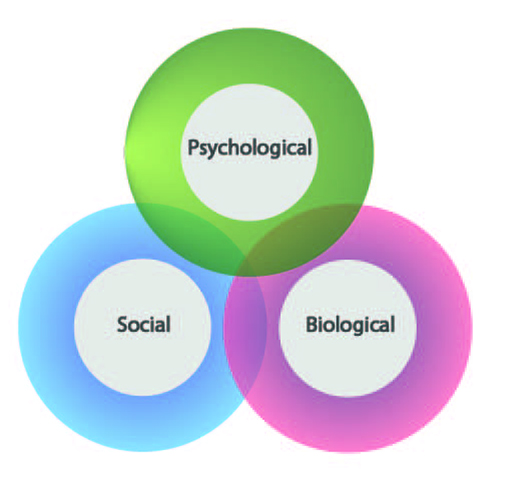1 Sport injury: a biopsychosocial approach
As understanding of the psychological aspects of sport injury has grown there has been a move in sports medicine towards the adoption of a biopsychosocial approach to treating and preventing sport injury. As its name indicates the biopsychosocial approach suggests that when dealing with sport injury the complex interaction between biological, psychological and social factors should be considered (Walker and Heaney, 2013).
This approach differs from the more traditional biomedical model which only recognises the influences of biological factors (Brewer and Redmond, 2017; Green, Jackson and Klaber Moffett, 2008). It has been suggested that the adoption of a biopsychosocial approach by sports medicine professionals can have a positive impact on the injured person through increases in factors such as patient satisfaction, empowerment and pain management (Heaney, Green, Rostron and Walker, 2012).

In line with the two psychological aspects of sport injury identified in Session 1 – psychological antecedents to injury and psychological responses to injury – Brewer and Redmond (2017) suggest that the biopsychosocial approach has two key implications on our understanding of sport injury:
- Injury occurrence is influenced by interactions between biological, psychological and social factors, and
- Injury can impact a person physically, psychologically and socially.
You will explore this further in the next activity.
Activity 1 Sport injury and the biopsychosocial approach
Make a list of some of the biological, psychological and social factors that you think might influence sport injury. These can be factors that influence either before an injury has occurred (factors that might make a sport injury more or less likely) or after an injury has occurred. Some examples have been added to help you.
| Biological | Psychological | Social |
| E.g. Diet | E.g. Stress | E.g. Peer pressure |
Discussion
There are various factors that you might have identified under each of the three headings. Biological factors might include things such as diet, hydration or illness. For example, being dehydrated or having a cold may make you more prone to injury. Psychological factors might include those you identified in Activities 2–4 in Session 1 such as stress, fear or anxiety, which could contribute to the development of an injury or influence your response to injury. Social factors could include things like peer pressure or social support. For example, peer pressure from team mates could encourage an individual to engage in ‘risky’ behaviour that might lead to a sport injury.
The important thing to remember about the biopsychosocial approach is that it is not looking at these factors in isolation, but in a holistic way. It suggests that sport injury can be influenced by the interaction of biological, psychological and social factors.
